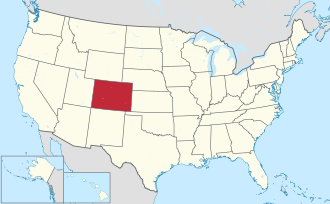2000
As of the census [24] of 2000, there were 13,956 people, 5,649 households, and 2,965 families residing in the county. The population density was 4 people per square mile (1.5 people/km2). There were 9,135 housing units at an average density of 3 units per square mile (1.2 units/km2). The racial makeup of the county was 95.08% White, 0.49% Black or African American, 0.70% Native American, 0.54% Asian, 0.04% Pacific Islander, 1.44% from other races, and 1.72% from two or more races. 5.02% of the population were Hispanic or Latino of any race.
There were 5,649 households, out of which 24.10% had children under the age of 18 living with them, 44.20% were married couples living together, 5.40% had a female householder with no husband present, and 47.50% were non-families. 27.20% of all households were made up of individuals, and 4.60% had someone living alone who was 65 years of age or older. The average household size was 2.30 and the average family size was 2.84.
In the county, the age demographic is distributed, with 17.90% under the age of 18, 21.10% from 18 to 24, 32.90% from 25 to 44, 21.20% from 45 to 64, and 6.90% who were 65 years of age or older. The median age was 30 years. For every 100 females there were 118.30 males. For every 100 females age 18 and over, there were 120.90 males.
The median income for a household in the county was $36,916, and the median income for a family was $51,950. Males had a median income of $30,885 versus $25,000 for females. The per capita income for the county was $21,407. About 6.00% of families and 15.00% of the population were below the poverty line, including 9.40% of those under age 18 and 7.20% of those age 65 or over.
2010
The total population for Gunnison County in the year 2010 was 15,324. There were 8,306 males and 7,018 females. The median age was 35.7 years old. Of the races, 14,152 were white, 92.4 percent; 1,255 were Hispanic or Latino (of any race), 8.2 percent; 510 claimed other race, 3.3 percent; 208 were American Indian and Alaska Native, 1.4 percent; 100 were Asian, 0.7 percent.
Total households were 6,516, 100.0 percent; Family households (families) 3,454, 53.0 percent, ("Family households" were based on a householder and one or more other people related to the householder by birth, marriage, or adoption. Same-sex married couples were not included.)
Occupied housing units consisted of 6,516 units, being 100.0 percent, with 3,900 or 59.9 percent being owner-occupied housing units; 2,616 or 40.1 percent being renters.
There were estimated 9,155 employed persons and 459 unemployed. 4,601 people drove to work alone and 1,027 car-pooled; 1,297 people walked to work and 1,052 took other means. Management, business, science, and arts occupations included 2,895 persons; Service occupations included 1,828 persons; Sales and office occupations included 2,192 persons; Natural resources, construction, and maintenance occupations included 1,635 persons; Production, transportation, and material moving occupations included 605 persons. 6,635 people were private wage and salary workers; 1,865 people were government workers; 655 people were self-employed and 49,356 dollars was the median household income and 67,333 dollars was the mean household income.







